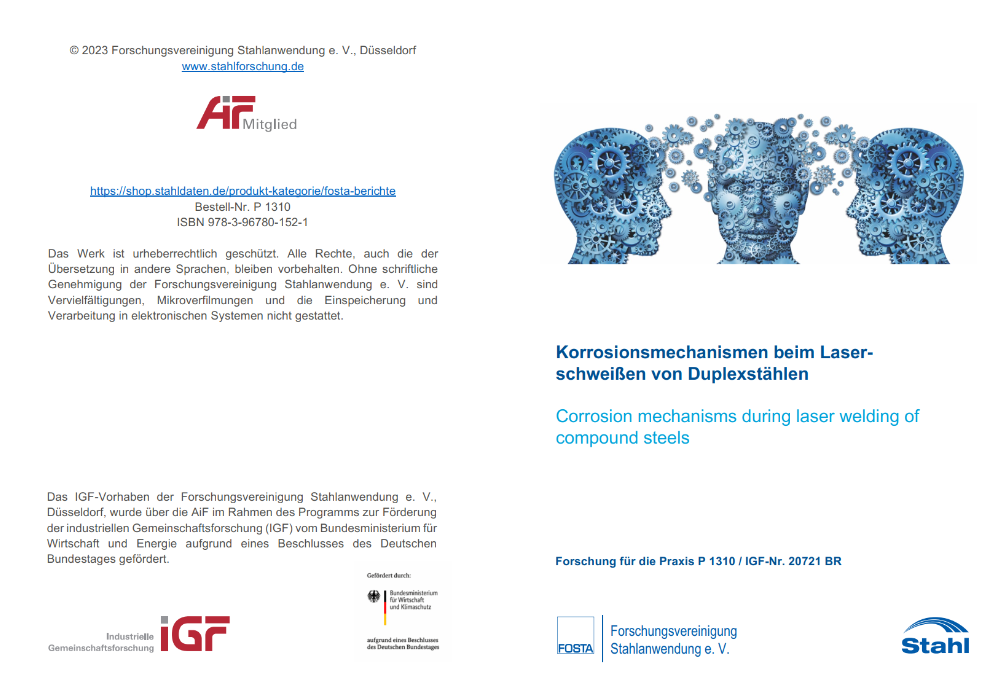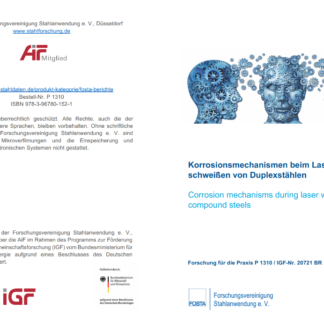Description
P 1310 – Corrosion mechanisms during laser welding of compound steels
The aim of this research project was the quality-compliant production of filigree structures from duplex steel by laser beam welding without the user of a fuller metal and/or solution annealing. By developing a process technology adapted to the material, investigations were mainly carried out on the most industrially relevant material 1.4462 (cold rolled) in the plate thickness range up to 2 mm.
In the first step, comprehensive investigations were carried out using a sigle-beam process. In addition to the influence oft he optical setup, the effect of multi-component gas mixtures as well as pulse modulation (temporal variation of the energy input) were integrated into the experimental investigations. In parallel to the experimental test series, a numerical simulation model was set up to represent the complex physical processes involved in laser beam welding. Based on the results of the simulation model , in situ post-heating was implemented using a two -beam setup consisting of fixed and scanner optics. It was not possible to achieve the minimum permissible austenite content of 30% in the weld metal, as specified in several specifications and in the technical literature.
After varying and finally optimizing the laser welsdng process as well as the post-treatment oft he weld seam, the corrosion resistance oft he obtained laser-welded duplex samples should be characterized by means of different measurement methodes. Above all, the elctrochemical properties oft he laser welds should be determined in the micrometer range. In ordert o achieve this goal, a new micro electrochemical measuring cell was to be developed by this research project, with which all usual electrochemical investigations in th emicrometer range can be accomplished. In parallel, the resistance of laser-welded duplex steel samples of pitting corrosion was tested using ferric chloride solution on a laboratory scale by means of the standard ASTM G48 test method.
After developing and setting up the new micro electrochemical measuring cell, the breakdown potentials oft he laser wels were determined in a 3% NaCl clution. The measurement results have confirmed that there is a good correlation between chemical and electrochemical results for assessing the corrosion resistance oft he laser welds.
Despite the low austenite contents, the use of the developed two-steel process strategy on the materials investigated resulted in a high resistance to pitting corrosion. In addition, the implementation of post-heating resulted in the formation of weld bead which, in contrast tot he experiments with a single laser beam, exhibited hardly any weld spatter and external wels irregularities. Thus, the requirements of evaluation group B according to DIN EN ISO 13919-1:2020-03 are met.
All research reports in german language only!
Published in:
January 2023
Authors:
M. Schmitz, Dr. M. Aziz


